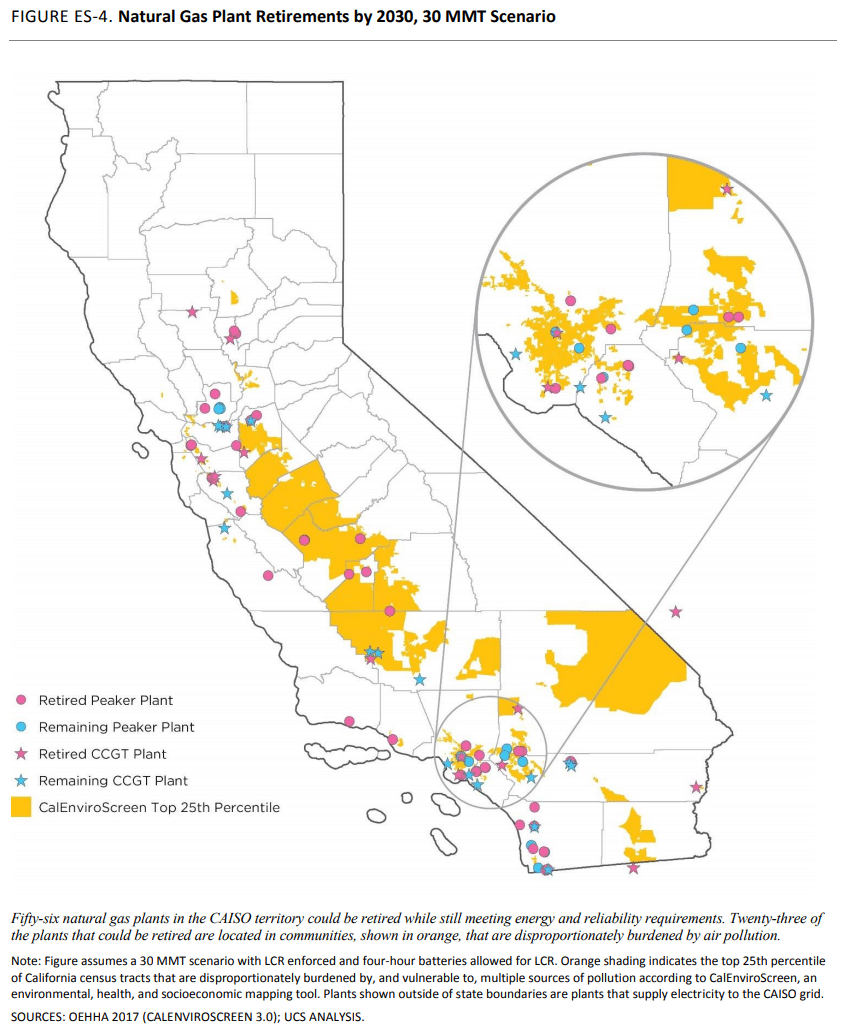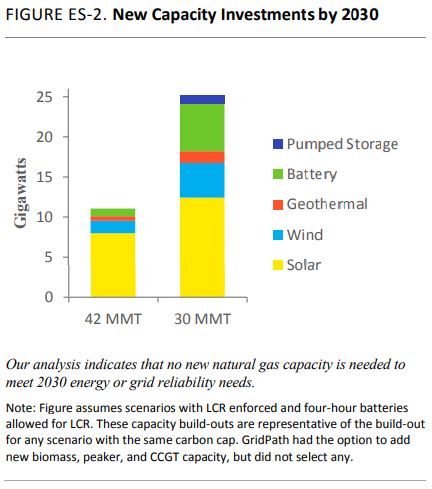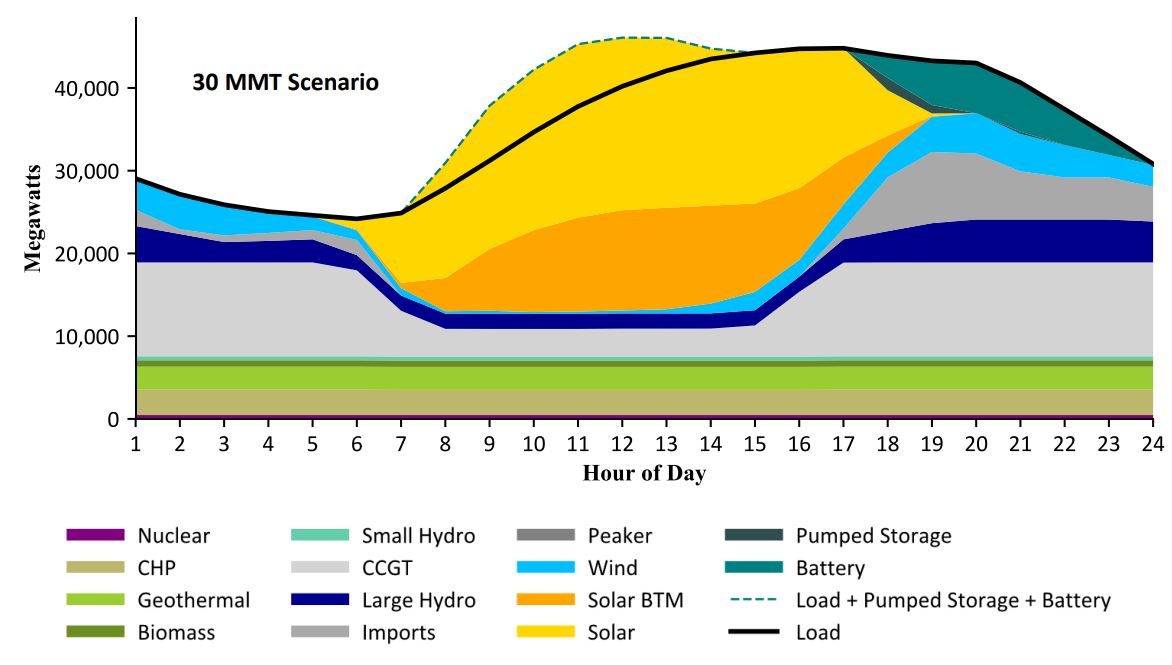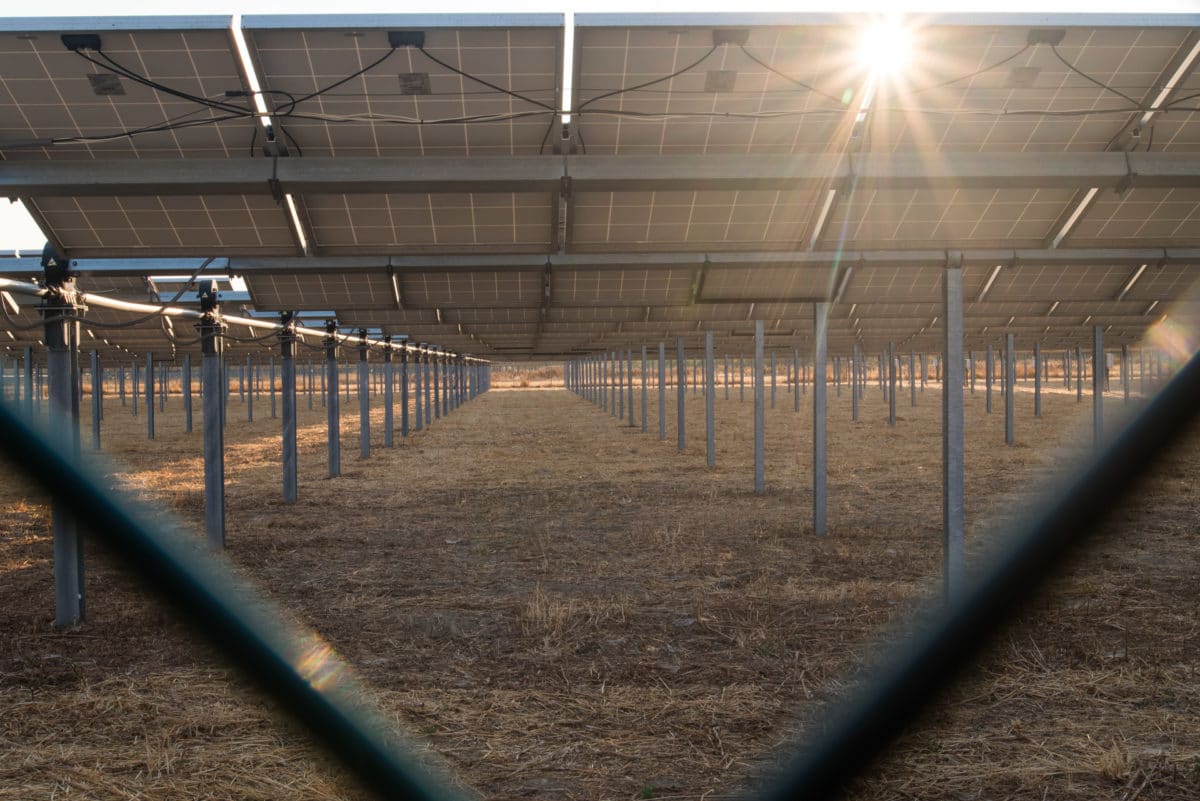 We’re lucky California has the third-lowest emissions per person in the United States, because – even with it being so efficient – it is still the second most-emitting state in the union due to its population of 40 million. Another strike of luck for all of us is that California cares about those emissions, as evidenced by the state contemplating a 100% renewables plan and putting the brakes on gas plans for considerations of renewables plus storage.
We’re lucky California has the third-lowest emissions per person in the United States, because – even with it being so efficient – it is still the second most-emitting state in the union due to its population of 40 million. Another strike of luck for all of us is that California cares about those emissions, as evidenced by the state contemplating a 100% renewables plan and putting the brakes on gas plans for considerations of renewables plus storage.
In light of California’s consciousness, Mark Specht and Laura Wisland, of the the Union of Concerned Scientists, have published ‘Turning Down the Gas in California‘ (PDF). The document delivers California a pathway to shut down at least 28, and as many as 56, of the state’s 89 gas plants by 2030. These gas plants represent the super majority of California’s CO2 emitting electricity generating sources, and generate around 33% of the state’s electricity.

The paper also laid out a plan, on a plant by plant level, for a socially equitable shutdown path that makes sure disadvantaged communities don’t continue to bear the brunt of living downwind of these facilities.
Additional variables included in the 12 unique models were, of course, sustaining grid stability, economic realities of the individual plants, timing of the plant retirements, and two separate levels of statewide pollution levels – 42 million metric tons (MMT) of carbon dioxide equivalent/year, and 30 MMT/year.
 Replacing these plants will take a combination of solar, wind, geothermal, battery storage and pumped storage. In one of the more aggressive models, the “30 MMT, Enforce LCR, Allow New Resources, 4h” scenario, approximately 12.4 GW solar, 4.3 GW wind, 5.9 GW batteries (with an average duration of about four hours), 1.5 GW geothermal, and 1.1 GW pumped hydro (with an average duration of about 12 hours) by 2030.
Replacing these plants will take a combination of solar, wind, geothermal, battery storage and pumped storage. In one of the more aggressive models, the “30 MMT, Enforce LCR, Allow New Resources, 4h” scenario, approximately 12.4 GW solar, 4.3 GW wind, 5.9 GW batteries (with an average duration of about four hours), 1.5 GW geothermal, and 1.1 GW pumped hydro (with an average duration of about 12 hours) by 2030.
pv magazine actually feels the Union could have been a bit more aggressive with their energy storage duration numbers, and maybe that would have enabled an even greater shutdown of gas plants. The average duration in the analysis was about four hours, however, we’ve already seen a six hour duration battery being sold into the California power grid.

In addition to the twelve-year plan that mapped out gas plant retirements and renewable deployments, the report offers an hourly analysis that shows the considerations given to renewable assets other than solar power. The researchers made a particular focus on timing of the clean electricity generation as California’s duck curve is so significant already.
We may well look back on these enterprising scientists, those laying the future vision of a clean power grid and CO2 free energy, as 21st century explorers. In a world that has experienced more than 33 consecutive years of higher than average temperatures, yet still has politicians calling climate change a hoax, it might in fact be that these people are our medicine people – mixing the waters of mathematical projections to enable a viable and sustainable future. Let’s hope California keeps listening.
This content is protected by copyright and may not be reused. If you want to cooperate with us and would like to reuse some of our content, please contact: editors@pv-magazine.com.








By submitting this form you agree to pv magazine using your data for the purposes of publishing your comment.
Your personal data will only be disclosed or otherwise transmitted to third parties for the purposes of spam filtering or if this is necessary for technical maintenance of the website. Any other transfer to third parties will not take place unless this is justified on the basis of applicable data protection regulations or if pv magazine is legally obliged to do so.
You may revoke this consent at any time with effect for the future, in which case your personal data will be deleted immediately. Otherwise, your data will be deleted if pv magazine has processed your request or the purpose of data storage is fulfilled.
Further information on data privacy can be found in our Data Protection Policy.